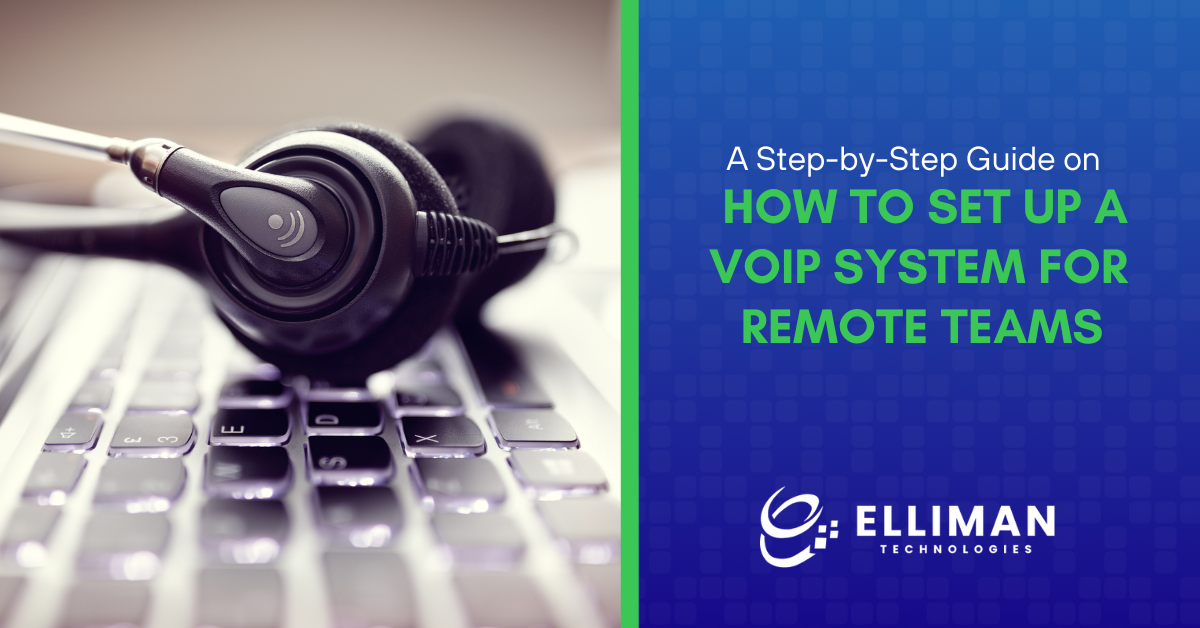Remote work is now the new normal. With businesses of every size moving towards flexible workplaces, communication platforms also need to adapt. This means the old-fashioned landlines are growing extinct because they are costly to scale, limited to their location, and don’t have the functionality modern teams need to perform. That’s why expanding businesses are moving over to VoIP solutions, which is a smarter and more efficient platform. Recent statistics by Tech.co show that approximately 31% of businesses currently utilize VoIP systems, indicating significant room for growth in the sector.
VoIP enables both outgoing and incoming calls online, without the traditional telephone wires. Whether your team is full-time remote or hybrid, with VoIP, everyone has the power to communicate, collaborate, and stay in touch from anywhere in the world. And the good news? It’s budget-friendly, scalable, and full of advanced features.
If your small business wants to make the ultimate switch, this guide will show you each step on how to set up a VoIP system.
Setting Up a VoIP System for Your Remote Team
Most people think setting up a VoIP system is a complex and technical procedure. But the truth is that it’s extremely easy. All you need are the right tools and planning to get your team up and running efficiently. This is how you set it up:
Define Your Team’s Needs
Before jumping into VoIP, take a step back and understand what your team actually requires. Whether you’re a startup or growing quickly, assess how many users you’ll support, your team’s setup, and call volume. Choose a VoIP platform that grows and adapts with your business.
Choose the Right VoIP Provider
Once you know your needs, select a provider with good uptime, excellent reviews, and features that support call analytics and CRM integration. Compatibility is key here. Make sure it has 24/7 support, particularly for hybrid teams that work beyond business hours.
Test Your Internet and Network
A strong internet connection is essential for VoIP. Choose a minimum upload/download of 1 Mbps for each user, with less than 150 ms latency, and less than 30 ms jitter. Implement tools like SolarWinds for maintaining network stability, call drop prevention, delays, and poor voice quality.
Get Proper Hardware
One of the benefits of VoIP is that you don’t need tons of costly hardware. If your team requires apps on laptops or mobiles, you’re all set. If you’d rather use traditional, hardware-based desk phones, you can plug those in with an Analog Telephone Adapter (ATA).
Keep in mind that the equipment you have should be call-optimized. You need a laptop with a minimum of 4–8 GB of RAM, noise-cancelling headphones, and a stable operating system (Windows, macOS, or Linux). But if you need excellent sound quality, spending on proper headphones with active noise cancellation does wonders.
Get Your VoIP Number
This is where your phone system starts to fall into place. Once you are registered with a provider, you have to configure your VoIP number. It is not associated with a certain piece of hardware, meaning your team is free to make or receive calls from anywhere.
You have the option of choosing a local number for targeting a specific city, an international number for going global, or even a toll-free number for free accessibility for your customers.
Set Up the VoIP System
The actual installation process will depend on the provider and the type of VoIP system you’re going for. If you’re using a cloud-based solution (which is great for remote teams), setup is mostly digital—no hardware, no tech guy on-site.
Just sign in to your provider’s platform, download the app on your devices, and configure your settings. You can create call flows, set up auto-forwarding, assign numbers, and enable voicemail in just a few clicks. It’s all online, and often comes with an intuitive dashboard that even non-techies can navigate with ease.
Train Your Team
Even the best system won’t shine unless your team knows how to use it. Take some time to onboard your employees. Host live demos, create quick-start guides, and walk them through key features like call transfers, voicemail settings, and muting/unmuting during a call.
Security should also be a big part of the training. Teach them how to create strong passwords, recognize phishing attempts, and avoid risky behavior. It’s also smart to provide ongoing support—collect feedback and continuously refine your training so everyone stays confident and connected.
Setting Up the Future for Your Remote Workforce
If you are making the move to remote work for the first time, setting up a VoIP system is key. You will save money, boost flexibility, and give your team an extra edge with advanced tools.
At Elliman Technologies, we assist businesses of all sizes in shifting their phone systems to VoIP systems that suit their business needs. From selecting the right features to configuring your system and training your team, our experts are here to guide you every step of the way.
Ready to upgrade your communication system? Reach out to Elliman Technologies to explore tailored VoIP solutions that scale with your remote team and your business goals.
Need Help Now? Just Ask!
Whether you’re having an IT emergency, facing a new cyber threat, looking for technology consulting, or just ready for a new digital plan, we’re here to help. Contact Elliman Technologies LLC now.

